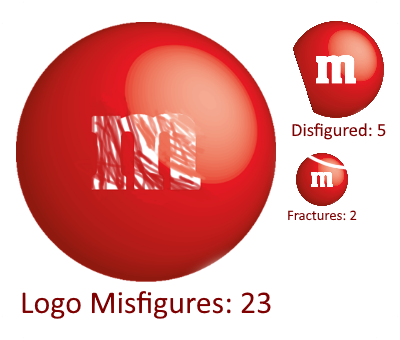
For our data collection process, we sorted M&Ms based on whether they had a defect or not. An M&M is considered defective if it’s cracked, creased or fractured, or if the logo was misprinted.
Each of our 100 M&Ms were analyzed, then recorded into a spreadsheet that displayed all of the defective or non-defective M&Ms. We then placed the type of M&M into the matching cup; one cup was for defective M&Ms, and the other was for non-defective ones. We ended up with 30 defected M&Ms and 70 normal M&Ms, as you can tell in the graphs below.
